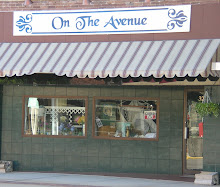Bakelite, a type of plastic, was discovered by accident in 1907 by a Belgian born chemist, Dr Leo Baekeland (1863-1944). Having moved to New York he inadvertently created the first completely man made liquid resin, which he named Bakelite. When poured, it completely assumed the shape of the mold it was in. It soon became an inexpensive choice for jewelry, cosmetics boxes, kitchenware...But did you know they also made Bakelite shaving kits, cameras, radios, plugs, handbags, records, Christmas light bulb casings, silverware handles, pitchers, cups...even furniture?
One of the biggest collections of Bakelite jewelry ever amassed belonged to Andy Warhol, and was stored in several bonded warehouses across the USA. In the film Top Hat, featuring Fred Astaire and Ginger Rogers, the floor was constructed out of Bakelite for the dance scenes. Evidently the most suitable material available at the time!
Since Bakelite is a resin-type of material, there can be a chemical reaction if a certain compound is rubbed against it. A simple test for Bakelite is to use Simichrome Polish, a pink polishing paste used by motorcycle and auto enthusiasts. When applied with a soft cloth or a Q-tip and rubbed against Bakelite, the friction and chemical interaction will turn the Simichrome a bright, rusty orange color.
Scrubbing Bubbles was once the standard cleaner to use for Bakelite testing, but experts now recommend Formula 409 instead. To use, dampen a cotton swab with 409 and rub it gently on the inside of the item being tested. If it's Bakelite, the swab will turn yellow. If a piece is lacquered, it may test negative with 409. Black Bakelite pieces often fail this test as well. Use the other tests above to confirm authenticity if a piece you suspect to be Bakelite fails with 409.
Another test is to listen for the "clunk" when two pieces of Bakelite are tapped together. This very distinctive sound is often heard when two or more Bakelite bangles are worn at the same time. Try tapping two pieces of another type of plastic together, and compare the sound to two pieces of true Bakelite the next time you're out shopping where Bakelite is on display.
Also, consider the weight of a piece of plastic, especially jewelry. Bakelite feels heavier, more dense when compared to other types of plastics. Hold another piece of plastic in one hand, and a piece of Bakelite of approximately the same size in the other. You'll notice the heavier feel of the Bakelite.
Rub the item in question vigorously with your thumb until you feel the plastic heat up. Then, before it cools, take a whiff. A distinct chemical odor similar to formaldehyde will linger with most genuine Bakelite. This often takes a bit of practice. Some noses find better results when the piece of plastic is placed under hot running tap water before sniffing it. This test works well with Bakelite bangle bracelets.
Look for wear scratches and patina that new pieces of plastic don't normally exhibit. Also look for tiny chips on the edges of carving. Examine the piece with a jeweler's loupe or another type of magnifier, if needed. Generally, an old piece of Bakelite will not be free of some minor scratching and wear, even though it is in excellent condition by a collector's standards.
Subscribe to:
Post Comments (Atom)


No comments:
Post a Comment